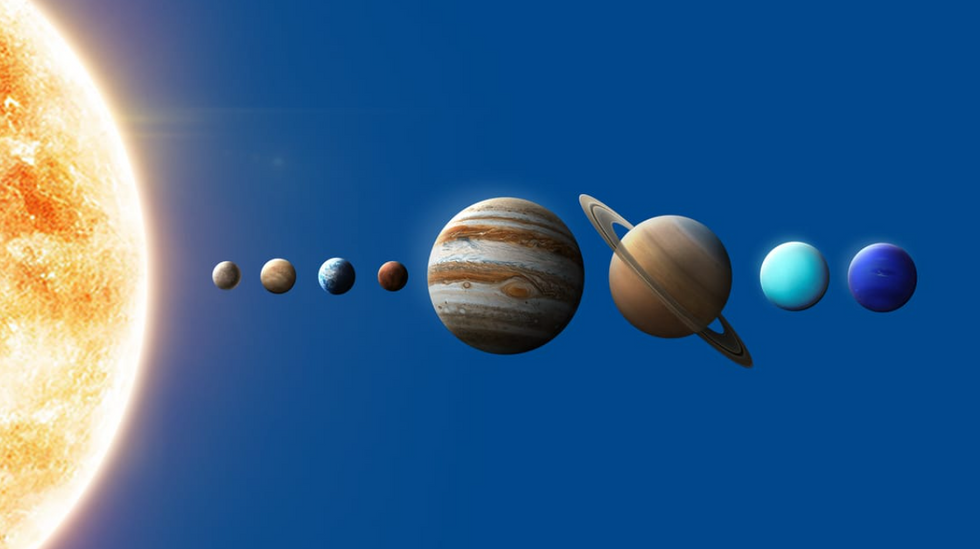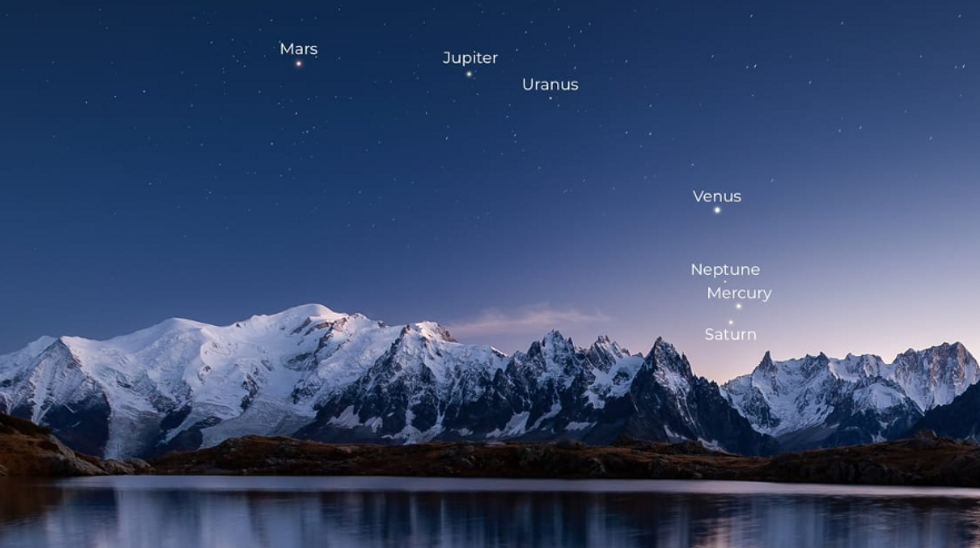Watch moment debris rains down after SpaceX rocket explosion
GB News
Mars, Jupiter, Uranus, Venus, Neptune, Mercury and Saturn will appear in a row
Don't Miss
Most Read
Trending on GB News
A rare astronomical event will see seven planets align in the night sky on 28 February, marking the last such occurrence for 15 years.
Mars, Jupiter, Uranus, Venus, Neptune, Mercury and Saturn will appear in a row, creating a spectacular planetary parade visible from Earth.
While alignments of four or five planets happen regularly, configurations of six or seven planets are exceptionally rare.
Six planets are already visible in formation, with Mercury set to complete the alignment when it appears above the horizon later this month.

While alignments of four or five planets happen regularly, configurations of six or seven planets are exceptionally rare
Vito Technology, Inc.
Not all planets will be visible without equipment, with Neptune and Uranus requiring binoculars or a telescope for viewing.
The celestial spectacle will be best observed just after sunset, as the stars begin to emerge.
Dr Christopher Barnes, senior lecturer at the University of Derby, explained: "Mars will appear in the east, Jupiter and Uranus in the southeast, and Venus, Neptune, and Saturn in the west."
"Even people in cities and light-polluted areas will be able to see most of the planets, but for the best views, it is advisable to find a darker location," Dr Barnes told The Independent.
MORE LIKE THIS:
- Asteroid wider than football pitch could collide with Earth as scientists reveal how 'sacrificial spacecraft' could defend the planet
- Rare planetary event set to take place later this month - and you don't need a telescope to see it
- Scientists discover new 'Super-Earth'... and it could be home to alien life
Most planets will be visible without special equipment.
However, stargazers hoping to spot Uranus and Neptune will need to use binoculars or a telescope.
The alignment offers a rare opportunity to observe multiple planets simultaneously in a clear formation across the night sky.
Dr Barnes highlighted the wellbeing benefits of observing such celestial events.

The celestial spectacle will be best observed just after sunset, as the stars begin to emerge
Vito Technology, Inc.
"Beyond their cultural significance, stargazing has many tangible benefits," he said.
"Engaging with the night sky encourages mindfulness, allowing individuals to momentarily detach from daily stresses and immerse themselves in the present moment."
The practice can promote feelings of peace and perspective, offering a unique opportunity for restoration, according to the expert.
The next major planetary alignment will occur in late October 2028, featuring five or more planets.
Another significant alignment is expected in February 2034.
Astronomy enthusiasts will need to wait until 2040 for another seven-planet alignment similar to this month's event.







